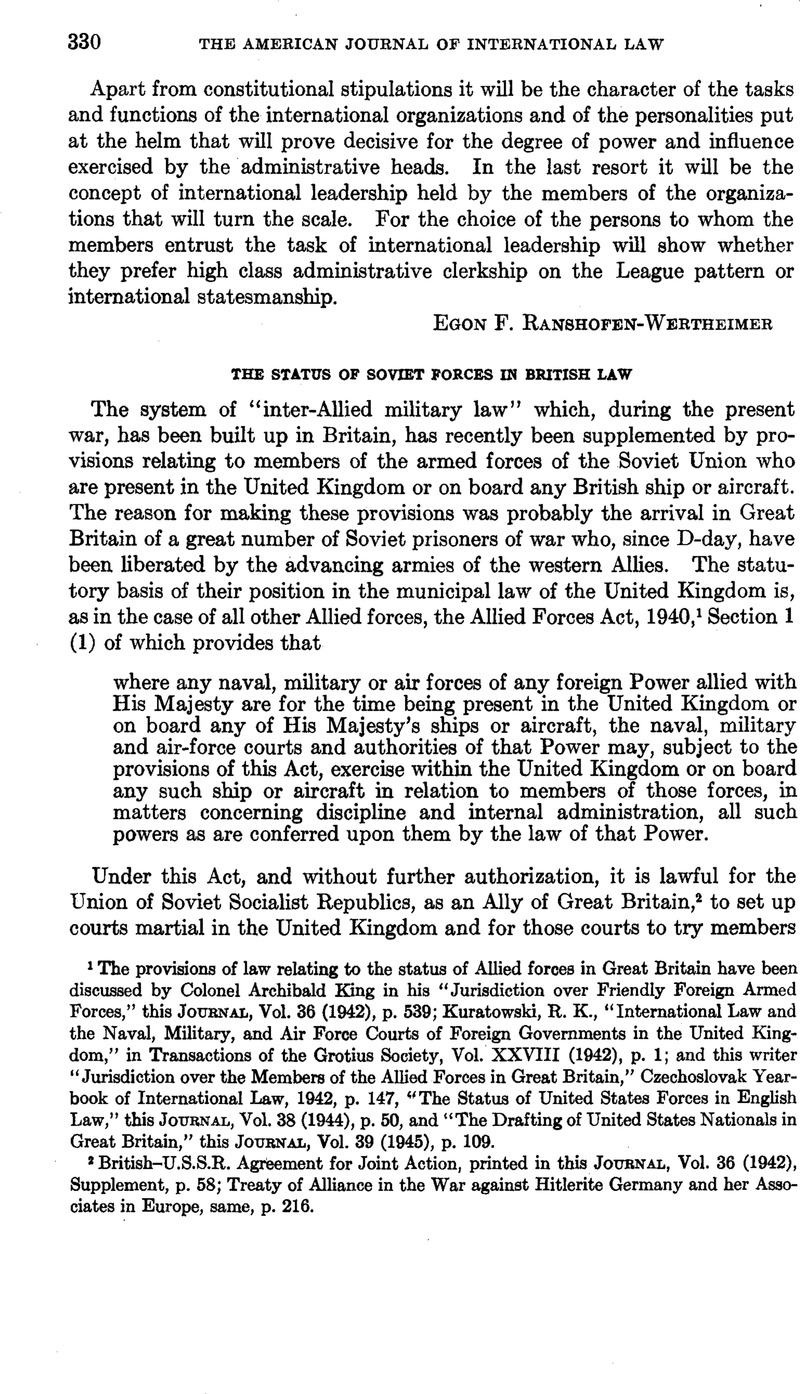No CrossRef data available.
Published online by Cambridge University Press: 25 April 2017

1 The provisions of law relating to the status of Allied forces in Great Britain have been discussed by Colonel Archibald King in his “Jurisdiction over Friendly Foreign Armed Forces,” this Journal, Vol. 36 (1942), p. 539; Kuratowski, , R. K., “International Law and the Naval, Military, and Air Force Courts of Foreign Governments in the United Kingdom,” in Transactions of the Grotius Society, Vol. XXVIII (1942), p. 1 Google Scholar; and this writer “Jurisdiction over the Members of the Allied Forces in Great Britain,” Czechoslovak Yearbook of International Law, 1942, p. 147, “The Status of United States Forces in English Law,” this Journal, Vol. 38 (1944), p. 50, and “The Drafting of United States Nationals in Great Britain,” this Journal, Vol. 39 (1945), p. 109.
2 British-U.S.S.R. Agreement for Joint Action, printed in this Journal, Vol. 36 (1942), Supplement, p. 58; Treaty of Alliance in the War against Hitlerite Germany and her Associates in Europe, same, p. 216.
3 For details see the articles quoted in note 1.
4 The Allied Forces (Application of 23 Geo. 5, c. 6) (No. 1) Order, 1940; S. R. & O., 1940, No. 1818 (Belgium, Czechoslovakia, the Netherlands, Norway and Poland); The Allied Forces (Greece and Yugoslavia) Order, 1941, S. R. & O., 1941, No. 651; the French Visiting Forces (United Kingdom) Order, 1943, S. R. & O., 1943, No. 1379; The United States of America (Visiting Forces) Order, 1942, S. R. & O., 1942, No. 966.
5 S. R. & O., 1945, No. 166.
6 Same, 1940, No. 1818. ‘
7 Same, 1940, No. 1816.
8 Same, 1940, No. 1817.